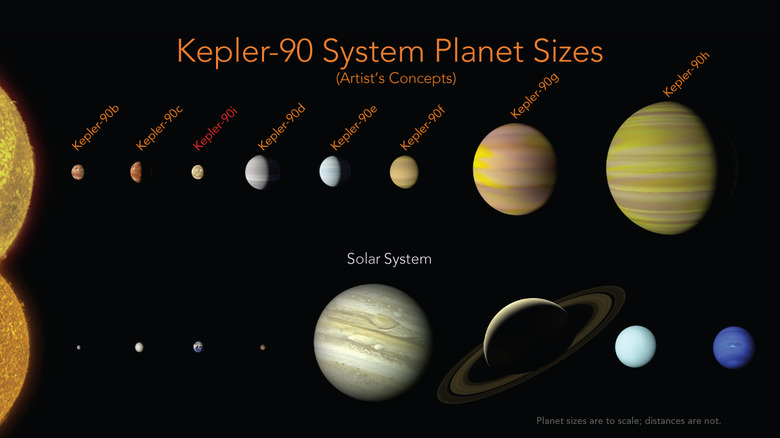Google AI Finds Exoplanet, Bringing Alien Solar System To 8
Google's machine learning technology has discovered the existence of a new exoplanet that was missed by NASA the first time around. The exoplanet is located in the alien solar system now known to contain eight planets all revolving around same star, Kepler-90. This makes the Kepler-90 system tied with our own solar system, which also contains eight planets circling the same star. The newly discovered exoplanet is called Kepler-90i.
Machine learning is mostly behind this latest discovery, though it wouldn't have happened without NASA's data. The space agency explains that researchers Andrew Vanderburg and Christopher Shallue trained the technology to find exoplanets based on Kepler light readings. These tiny brightness changes are caused by a planet passing in front of a star, but identifying them can be difficult.

The previously discovered system revolving around the star Kepler-90 was known to contain seven planets; researchers had missed the evidence of the eighth newly discovered planet. Google's AI, though, found evidence of its existence when sifting through the data, identifying what NASA calls "weak transit signals."
This new exoplanet, Kepler-90i, is described as being "sizzling hot" and having an orbit that lasts 14.4 days. The star itself, Kepler-90, is located 2,545 light-years from Earth. The other planets in the solar system are similarly named, including 90b, 90c, 90d, 90e, 90f, 90g, and 90h. The newly found 90i planet resides between 90c and 90d, putting it third in line from that Sun-like star.
In talking about the discovery, Vanderburg described the Kepler-90 system as being "like a mini version of our own solar system." The larger planets are on the outside and the smaller planets are on the inside, "but everything is scrunched in much closer," he explained. The neural network discovered other exoplanets, as well, such as a sixth planet in the Kepler-80 system; despite some false positives, the system demonstrated a very high accuracy level during testing.
SOURCE: NASA
